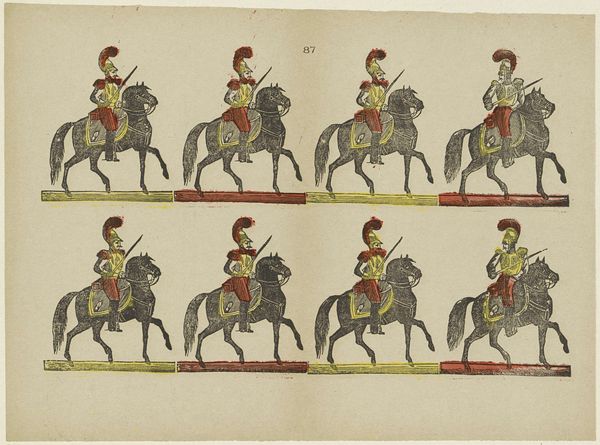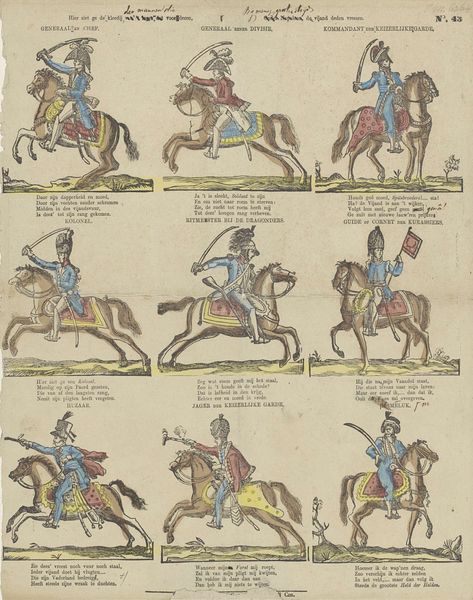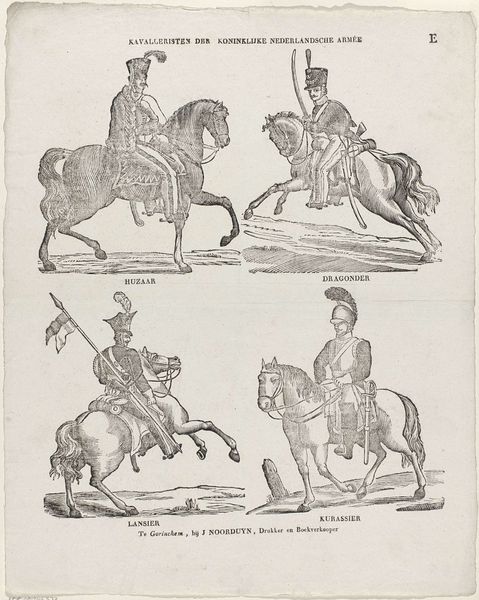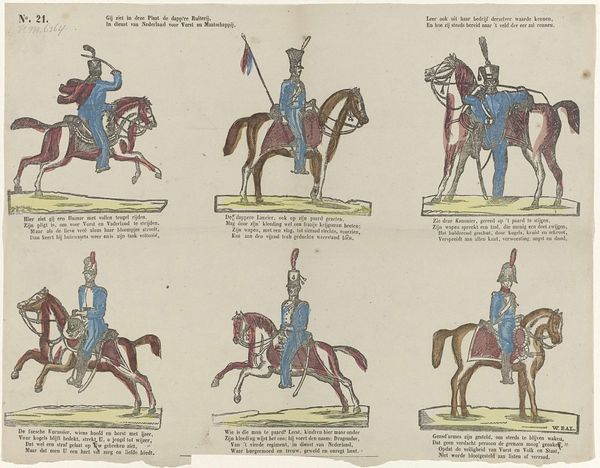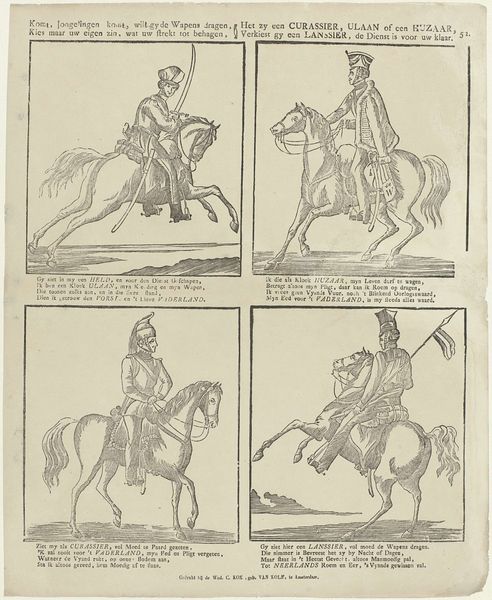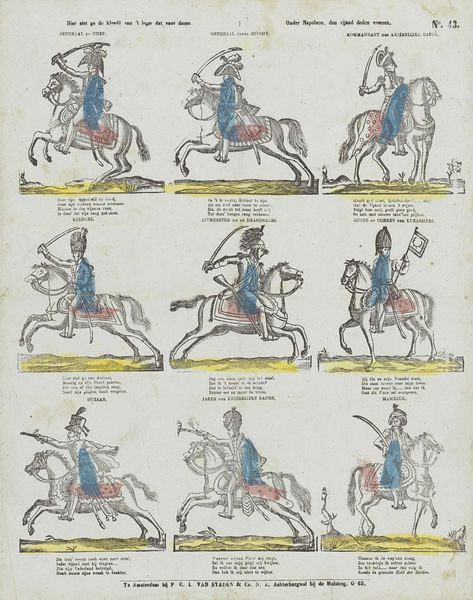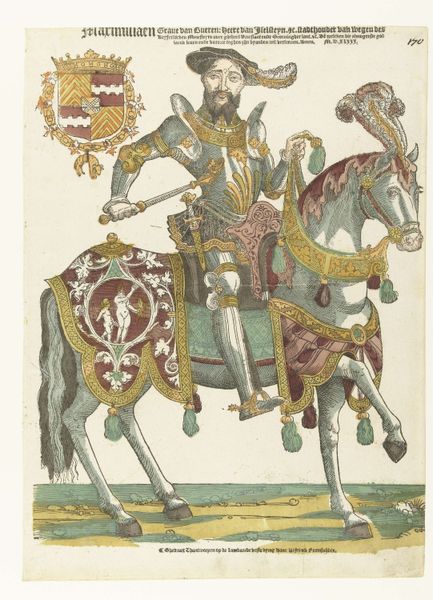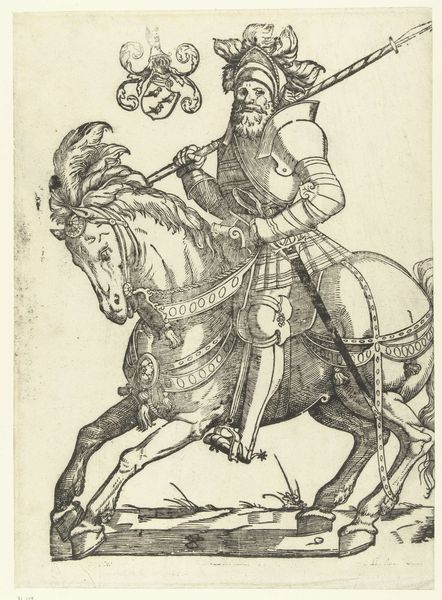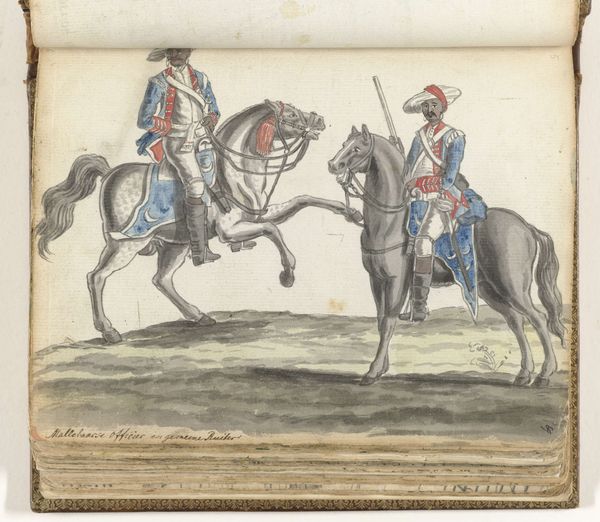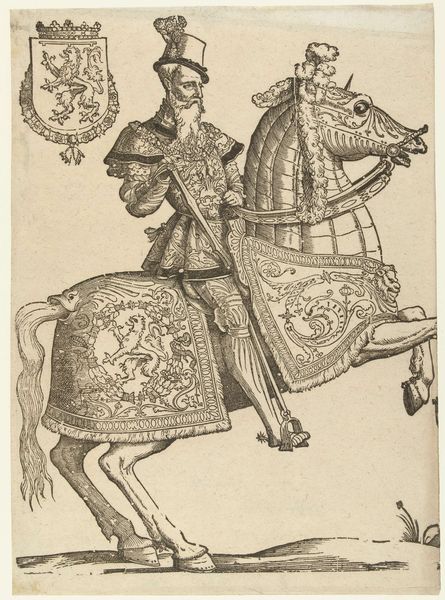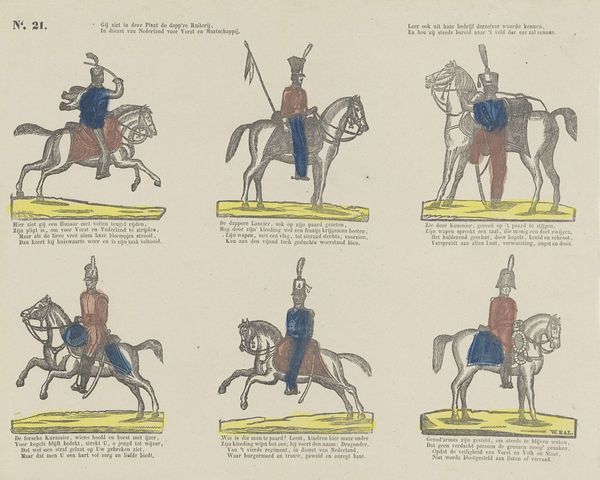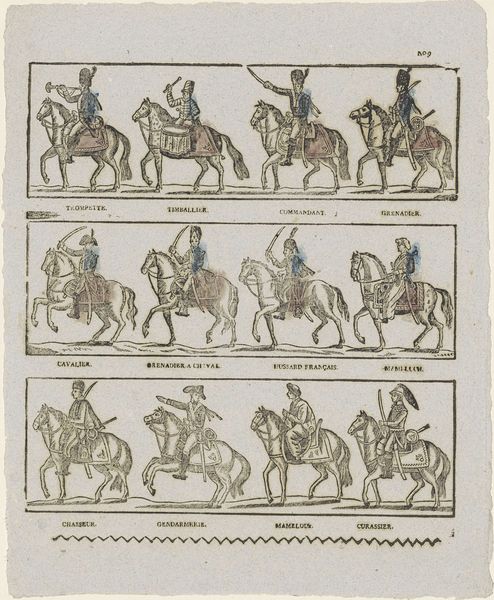
drawing, ink, pen
#
portrait
#
drawing
#
pen sketch
#
figuration
#
ink
#
pen
#
genre-painting
#
history-painting
#
academic-art
Dimensions: height 256 mm, width 420 mm
Copyright: Rijks Museum: Open Domain
Editor: This is a pen and ink drawing of "Prins Willem de vyfde / F.S. Wilhelmina P.V.O.", made sometime between 1833 and 1900. It depicts, as the title suggests, Prince William the Fifth and his wife Wilhelmina, each on horseback. It looks almost like a children’s book illustration, but the figures are so formally posed. What can you tell me about this piece? Curator: This image, presented as a pen sketch, offers a fascinating view into 19th-century printmaking and its potential function beyond 'high art'. Let's consider the labor involved in creating such an image. The detailed linework, the probable reproduction process... It speaks to a commercial endeavor. Do you see how the medium itself becomes part of the message? Editor: I do. The image doesn't have the feel of fine art, and if it was reproduced, that means it was possibly mass-produced... Curator: Precisely. This raises important questions. Who was the intended audience? What was the purpose of circulating images of the Prince and Princess in this manner? Was it about reinforcing social hierarchies or simply commemorating them as popular figures through accessible means? Editor: So, it’s not just about the image itself but about its distribution and consumption. Like a form of early mass media? Curator: Exactly. Examining the ink, the paper, and the printing process allows us to consider the social and economic contexts in which this piece was made and consumed. What limitations did the pen-and-ink method impose? Did it make it faster, and cheaper to reproduce many of these images for public circulation? Editor: I never would have considered it that way, looking beyond just the subjects of the piece, and more at how it came into existence. Curator: By considering materiality and production, we move beyond mere aesthetics and see the work as a product of its time, deeply embedded in social and economic systems. Editor: I see the piece in a new light now. Thank you!
Comments
No comments
Be the first to comment and join the conversation on the ultimate creative platform.
